Admin
User
User is the user of Admin UI. A user has a privilege, and this privilege is used to control the access to the menus of Admin UI.

A normal user should be a member of a group.
Once a user ID is registered on the console, only user information can be modified or updated, with the exception of the user ID itself, which cannot be changed.
sFTP User
This SFTP user is specifically designated for SFTP operations and does not have SSH login access to the system. This user is limited to performing SFTP operations exclusively.
This sFTP user has its own home directory under data/sftp directory.
The user home directory is created when the user log in the first time.
User Name
Username
Password
Password
Home Directory
Home directory.
If no home directory is specified, username is used as the home directory.
Status
Status
· Enabled
· Disabled
Expire Policy
Expire date(days)
Default value is 90 days.
Changed At
Password changed time.
Sftp access is allowed only when the user/password is correct, status is enabled, and password is not expired.
Role
Role manages the roles in ISM Admin UI.

ISM Admin role has all the privileges in Admin UI.
Application Groups
Application groups provide a way to organize and group together related items such as flows, systems, data structures, and environment variables. Users are assigned to one application group, and their access is restricted to the items within those groups. This helps to ensure that users only have access to the resources that they need to perform their tasks and helps to maintain security within the system.
There is one default group - Default. Admin users do not belong to any group.

ACL
ACL manages access control list for every menu in Admin UI.
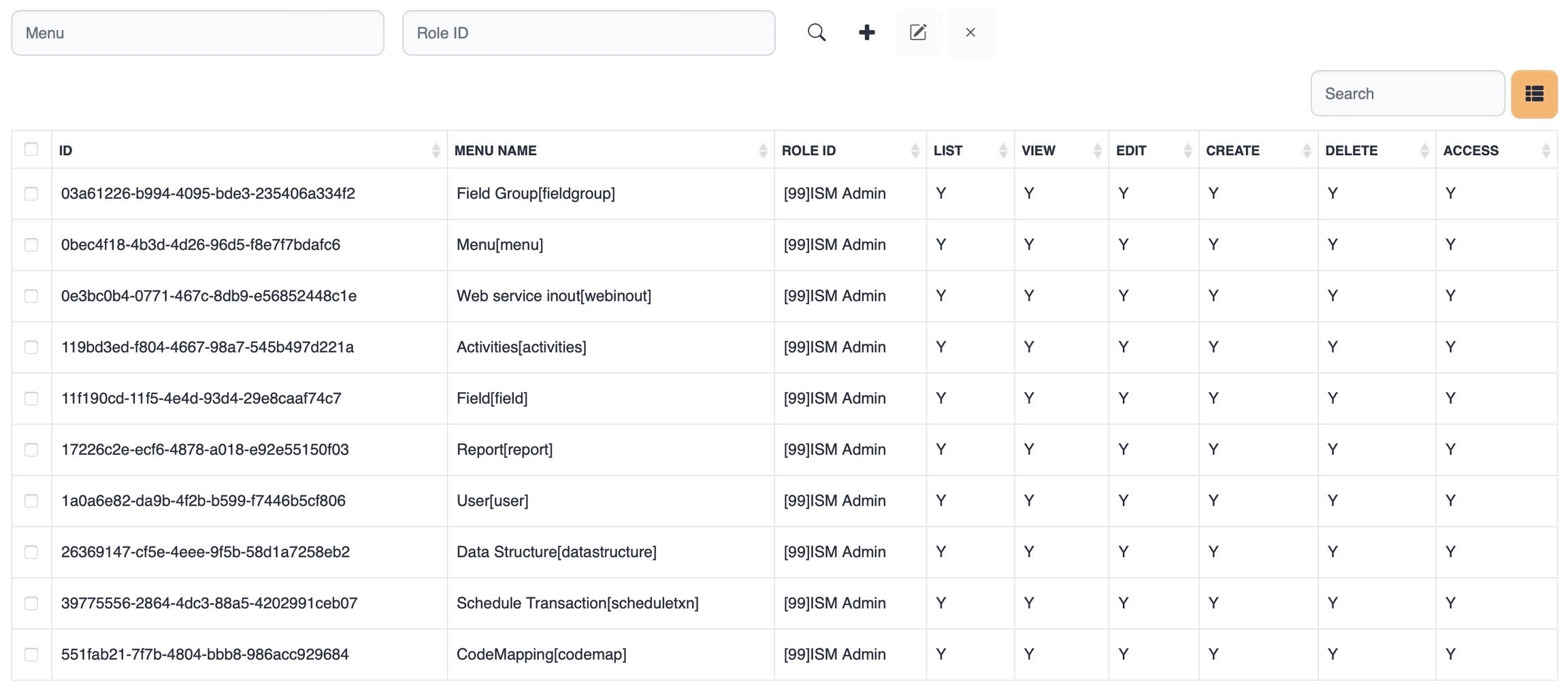
ACL consists of these attributes.
Menu - Menu name of ACL
Role - Role name of ACL
Access - Access to the menu
List - List the records
View - View a record
Edit - Edit a record
Create - Create a record
Delete - Delete the records
If a role has no Access privilege, the menu is hidden to the users with that role.
If a role has no List privilege, the users with that role cannot retrieve the list with different filters from the default filters.
If a role has no View privilege, the users with that role cannot see the record in detail.
If a role has no Edit privilege, the users with that role cannot update the record.
If a role has no Create privilege, the users with that role cannot create a new record.
If a role has no Delete privilege, the users with that role cannot delete records.
If a role does not have a specific privilege, the button or menu for that privilege is deleted.
Assign ACLs to a role which access certain menus only.
This role has privileges on these menus.

Once a user of this role logs in, the user can see only these menus.

Runtime node
Runtime node manages running instances. A runtime node is registered manually and updated automatically.

Runtime node has these properties and data.
Node Name
Instance name
Host Name
Host name of the instance
Service Port
Service port. This port is same as HTTP port
HTTP Port
HTTP Port
Admin Port
Admin port. This port is used for these operations.
· Get application list.
· Deploy a new web service.
User ID
Admin user id. This user is administrator of this instance
Password
Admin password.
Status
The status of the instance. This value is updated while the instance is starting.
· Stopped
· Running
DNS Host
This value is used to determine WSDL url.
If DNS Host is empty, Host Name(or ip address) of the instance is used
Master
This value is set while the instance is starting.
This value is from this system property.
![]()
These properties are runtime properties and are generated by system monitoring.
UP Time
JVM Up time
CPU(%)
Current system CPU Usage (%)
HEAP(%)
Current Heap usage (%)
HEAP(MB)
Maximum Heap Memory (MB)
Process ID
Process ID of this instance
Request Count
Pending request count for asynchronous sub flow
Request Size(KB)
Data size of pending requests for sub flow(KB)
Import
Import is used to deploy flow(s) or schedule(s) to another environment. Import is performed on the target environment.
These items can be imported.
· Flow
· Schedule
· System
· Data
· Field Group
· Field
· Web service
· Web service client
Importing data is performed between the web consoles. Target web console connects to the source web console and get data from the source.
Source web consoles are managed through this.
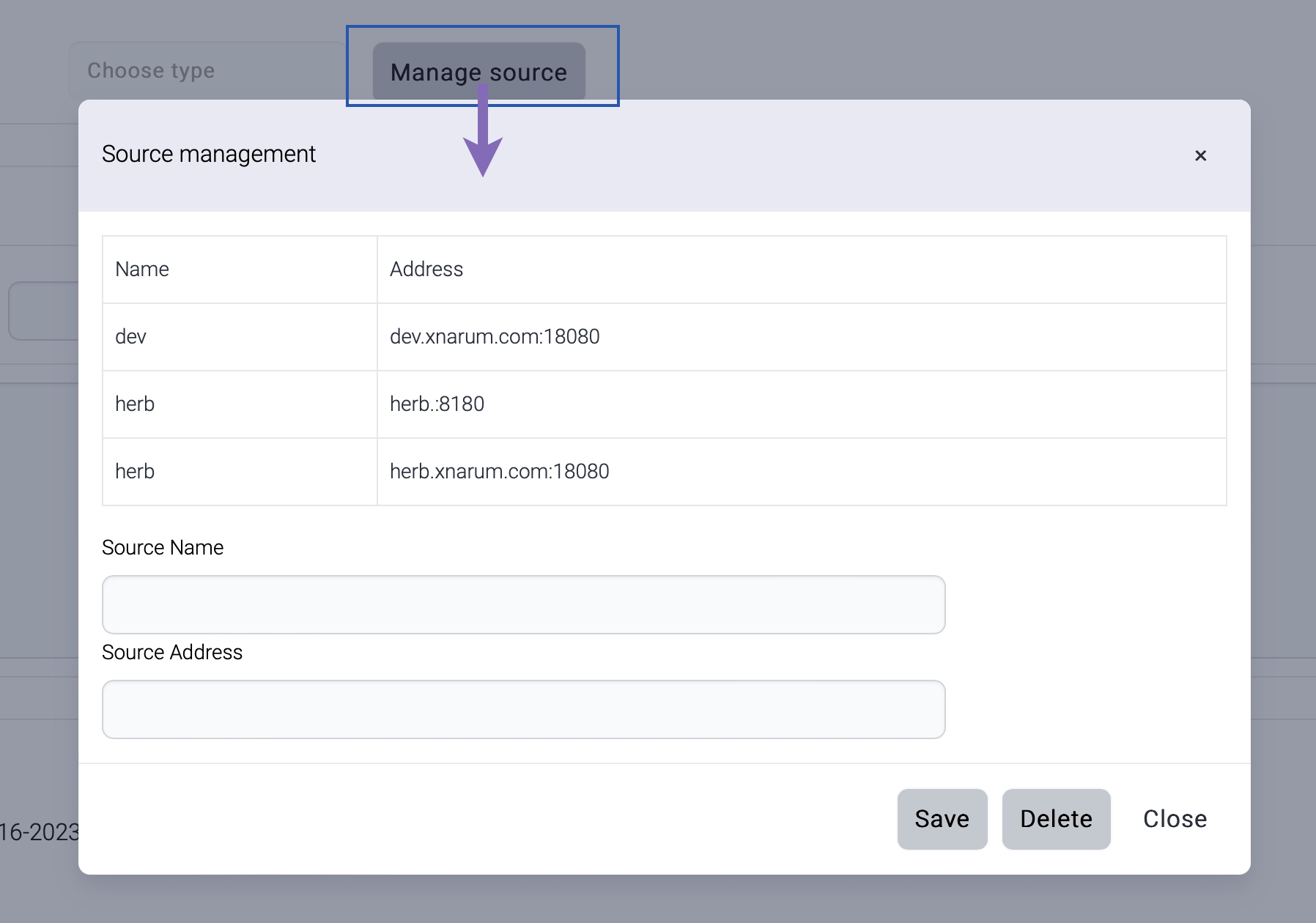
Choose import type and click search ( ) button, then the items will be displayed. Source name field is the search filter.
) button, then the items will be displayed. Source name field is the search filter.
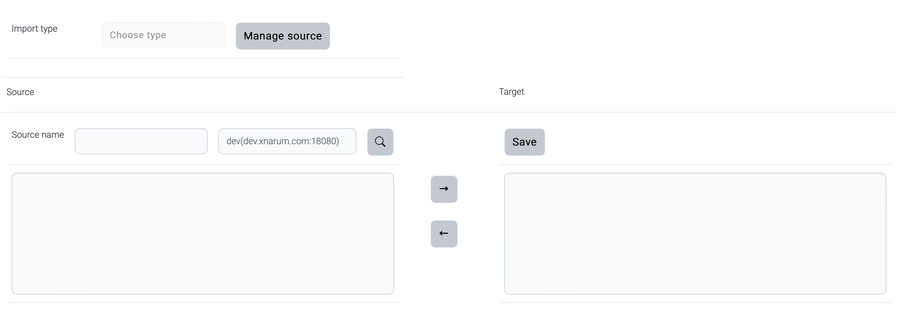
Select items from the left box, and click right ( ) button, then selected items are copied in the right box.
) button, then selected items are copied in the right box.

Click save ( ) button, then the items in the right box will be imported.
) button, then the items in the right box will be imported.
If the item type is flow, data structure and system information are imported together. But the system is imported together only when that system does not exist.
Import does not publish items to the cache. Imported items should be published separately.
Web service and web service client import does not import the generated classes together. Web service and client should be generated separately on the imported environment.
Housekeeping
Housekeeping provides easy management tool for the ISM repository database. Log tables can be truncated manually or by schedule. Other tables then log tables are not truncated.
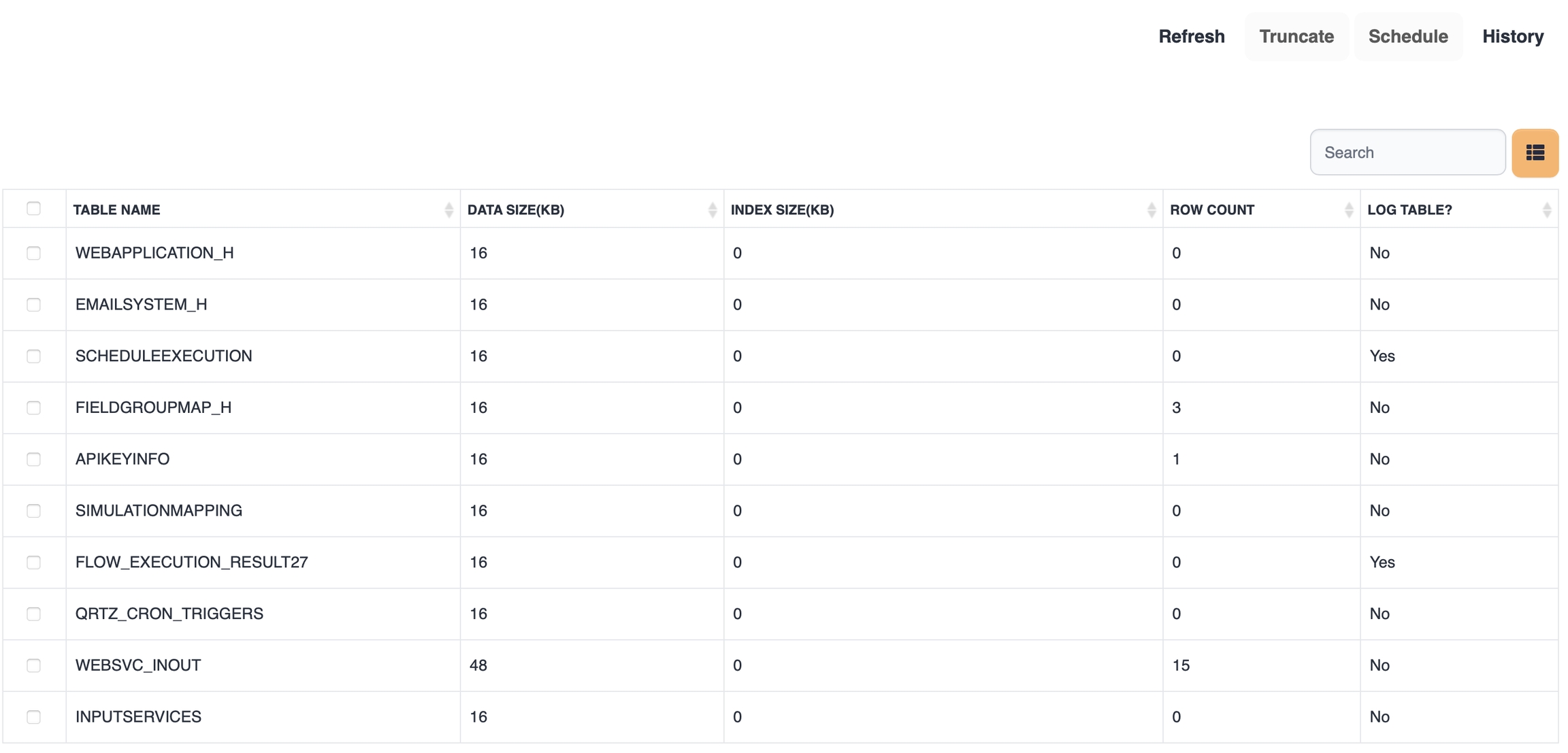
Housekeeping shows the information of the tables, but this information does not show exactly accurate status of the tables. These data come from database statistics not from each table and this means the data is not synchronized at the same time as the records updated.
The table shows these data.
Table Name
Table Name
Data Size (KB)
Table size in KB
Index Size (KB)
Index size in KB
Row Count
The record count
Log Table?
The indicator whether this table is ISM Log table.
Actions on the log tables are these.
Refresh
This action goes to the database and gather table information.
Truncate
This action truncates the selected log tables.

The result of the truncate operation is displayed.
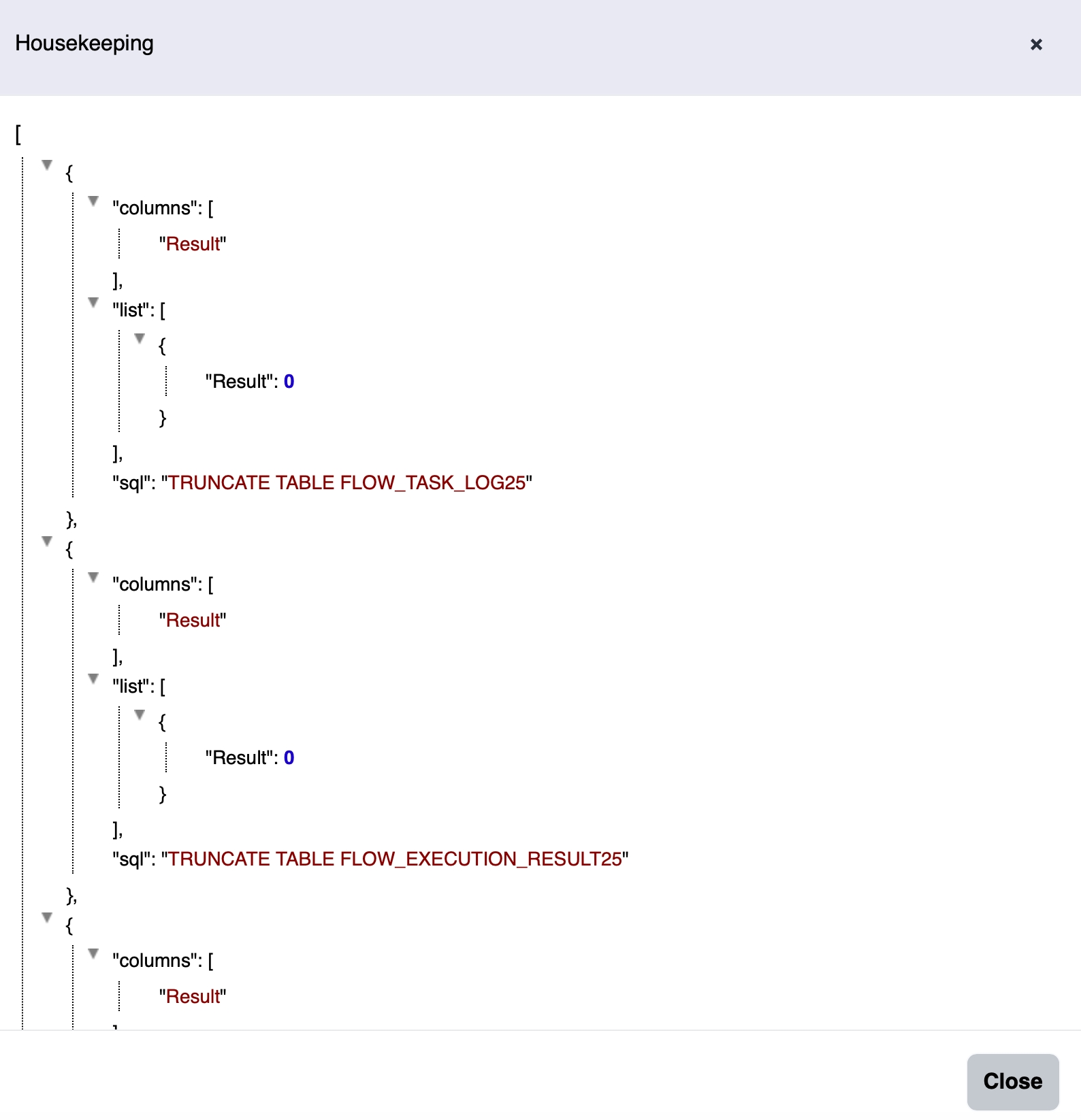
If non-log tables are selected, truncate is not executed.

Parameters
Global parameters are managed. Global parameter is a parameter can be used in any flow. If a flow has the same parameter as Global, the parameter of the flow has higher priority.

A parameter cannot have dot(.) character. The dot character (".") is used to represent hierarchy or nested objects/properties.
Configuration
Configuration manages these configuration values for the system monitoring and management.

housekeeping.days
Housekeeping policy for the old transaction records. This policy is not enabled by default. To activate this housekeeping, add this property to this file - jetty-9.4.7/etc/xnarum.xml and restart jetty process.
<Call class="java.lang.System" name="setProperty">
<Arg>housekeeping.activated</Arg>
<Arg>true</Arg>
</Call>
cpu.threshold
cpu.threshold defines the warning threshold for the notification to Admin UI dashboard. If the system cpu usage is equal or higher than this threshold, warning notification is displayed to Admin UI dashboard.

disk.threshold
disk.threshold is about the disk usage. If disk usage is equal or higher than this threshold, warning notification is displayed to Admin UI dashboard.
Activities
Activities shows all the activities of the users. If activity logging is activated, all the user activities from the login until logout are logged. This logging is not activated by default.
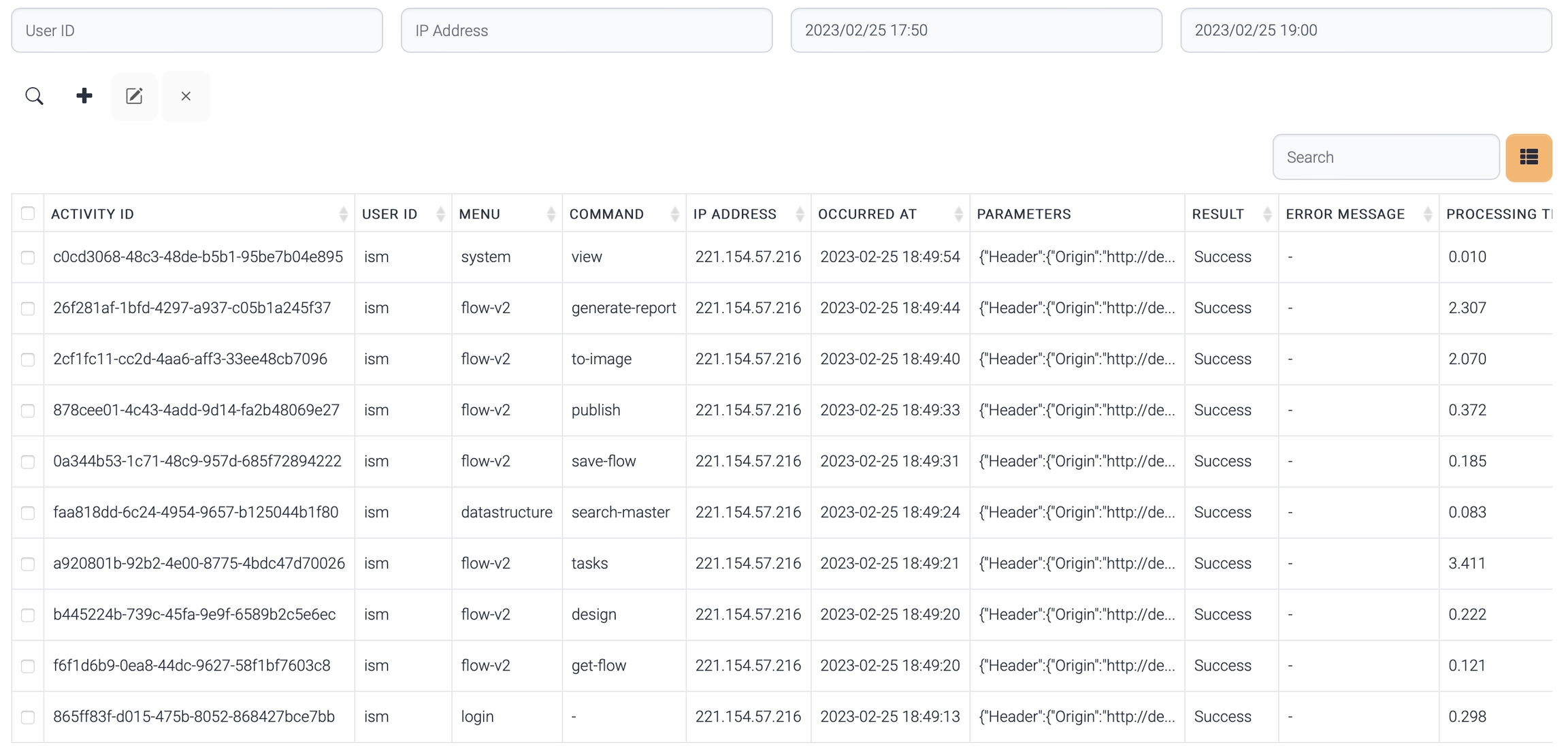
To activate this logging, add this property to this file - jetty-9.4.7/etc/xnarum.xml and restart jetty process.
<Call class="java.lang.System" name="setProperty">
<Arg> activity.log</Arg>
<Arg>true</Arg>
</Call>
Settings
You can change theme or fonts through this menu.
Fonts
There are three fonts.
· Roboto

· Montserrat

· Nunito Sans

Theme
Theme can be changed with the icon on the top right corner too.

· Light - white background, blackish font
· Dark - black background, whitish font

Last updated